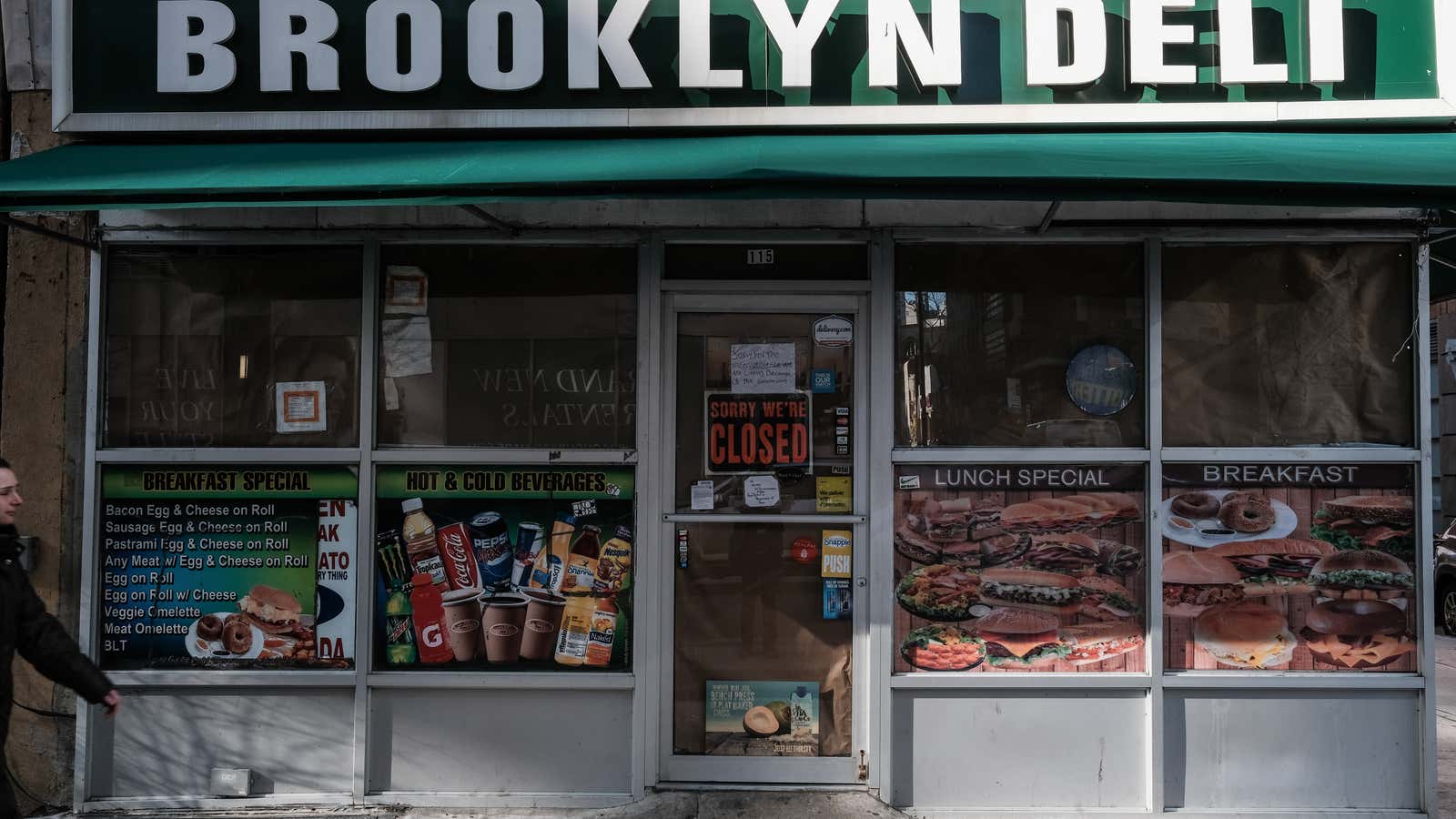Last month, the US Congress created a $350 billion fund to keep small businesses solvent and workers on payrolls, amid widespread commercial shutdowns to try and contain the coronavirus pandemic. Demand for the program is proving to be immense, and there are signs that it could run out of money.
The legislation for the Paycheck Protection Program was written quickly and got off on to a rocky start on Friday: The CEO of small business lender Fountainhead said he still had a number of unanswered questions about it and that his company didn’t have a way to submit applications to the Small Business Administration, which is guaranteeing the loans.
Bank of America, the first big bank to get up and running, received more than $22 billion of loan requests from 85,000 small enterprises, according to CNBC. Wells Fargo said yesterday that it has already received $10 billion of requests from small businesses, which is enough to exhaust its lending capacity under program.
Getting the money out quickly was sure to be a challenge. The SBA handled about $30 billion of small business lending last year, and now it’s charged with pumping out some ten times that amount as quickly as possible.
Hundreds of lenders were still trying to get approval to access the SBA system after it went live on Friday, according to Independent Community Bankers of America. The agency’s systems were overwhelmed by the traffic, while banks remained “frustrated with a myriad of unanswered questions and lack of clear instruction,” the trade group said. The amount of money available is likely to be far too little.
“Funding of $349 billion is frankly inadequate for the magnitude of need in the American small business community and is likely to run out quickly,” the ICBA wrote in a letter to the US Treasury. “When the large banks all come fully online, these funds will be depleted rapidly, and thousands of cash-starved small businesses who believe they were promised access to credit will be frustrated and angry. We urge an immediate request to Congress for additional funding and will work with you to secure it.”
Depleting the funds would, in one sense, be a good thing, because it shows business are attracted to the program. PPP is designed for America’s 30 million-or-so small businesses that support about half of the country’s employment. The program provides low-interest loans of up to $10 million, which can be forgiven if used for immediate payroll costs.
The borrowing is meant for any business with fewer than 500 employees, including self-employed people, and is available retroactively from Feb. 15 so that workers can be rehired. In addition, the funds can be used to pay utilities, rent, and mortgage interest, with no collateral requirement.
Giants like JPMorgan and Wells Fargo may be able to shovel out large sums, but the US’s more than 4,000 community banks are also a core part of the market, making about half of the nation’s loans to little operators. Small business loans tend to be bespoke, tailored to the local market, and community banks specialize in lending to these entrepreneurs. The ICBA urged the Treasury to allocate at least a quarter of PPP loans to banks that have $50 billion in assets or less. “Community banks serve markets not served by the large banks,” the trade group said.
Karen Mills, a senior fellow at Harvard Business School and a former SBA administrator, said in an email on April 1 that the $350 billion of funds available for the small businesses are likely to go quickly. “We may need another capital injection from the government to tide over small businesses,” she said.
That means politicians may have to write another big check. That could be difficult for some lawmakers in Washington to stomach, having just approved a whopping $2 trillion package to support the US economy.
